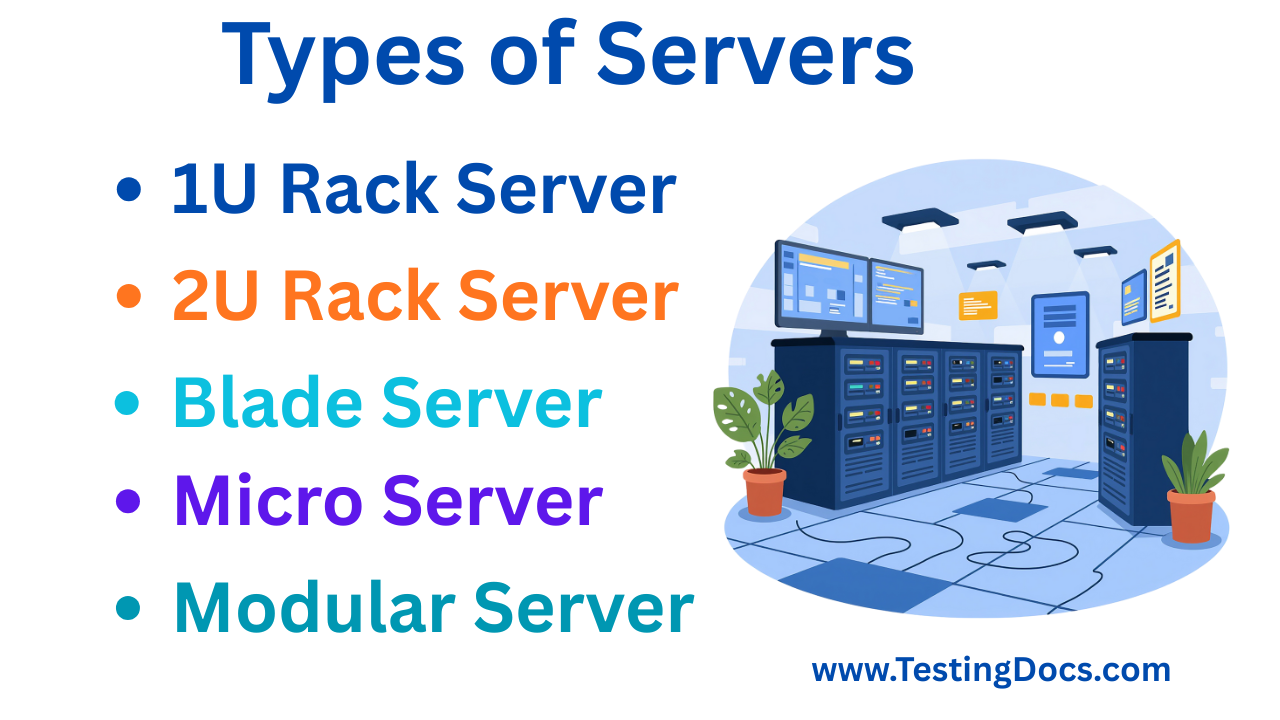Types of Servers
Types of Servers
In a data center, servers are powerful computers designed to manage, store, process, and deliver data, applications, and services to users or other devices. Each type of server is built to handle specific workloads and optimize space, power, and performance.
1U Rack Server
A 1U Rack Server is a compact server that fits in a single unit (1.75 inches) of a standard 19-inch server rack. It is designed to save space and is ideal for data centers needing high density with efficient cooling and power management.
2U Rack Server
A 2U Rack Server occupies two rack units (3.5 inches) in height. It offers more space for components like storage drives, memory, and better cooling systems compared to 1U servers, making it suitable for more demanding workloads.

Blade Server
A Blade Server is a slim, modular server that slides into a chassis containing shared power, cooling, and networking. It allows multiple servers to be housed in a single enclosure, saving space and improving scalability in enterprise environments.
Micro Server
A Micro Server is a small, energy-efficient server designed for lightweight tasks like web hosting or file sharing. They consume less power, are cost-effective, and are often used in small businesses or edge computing setups.
Modular Server
A Modular Server is a flexible system that allows multiple server modules to be installed in a single chassis. Each module can operate independently but shares common power, cooling, and network resources. This design provides scalability, easier maintenance, and efficient resource utilization in enterprise environments.
